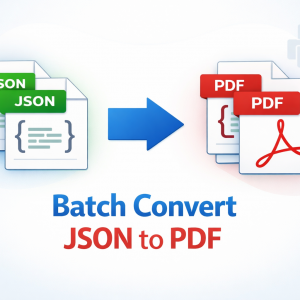The way people eat is changing—and fast. Over the past decade, the fast casual restaurant market has emerged as one of the most dynamic segments of the food and beverage industry. Positioned between quick-service restaurants (QSRs) and full-service dining, fast casual brands offer the convenience of speed with the quality of fresh, customizable meals. This unique blend has fueled remarkable growth worldwide, attracting both everyday diners and investors.
In this blog, we’ll explore what’s driving the rise of fast casual restaurants, the latest market trends, challenges, and what the future holds for this booming industry.
What Defines the Fast Casual Restaurant Market?
Fast casual restaurants combine elements of fast food and casual dining. Customers enjoy higher-quality ingredients, freshly prepared meals, and stylish environments—all at affordable price points. Unlike traditional fast food, these establishments often emphasize healthier options, sustainability, and customer experience.
Examples include chains focusing on:
-
Fresh salads, grain bowls, and wraps
-
Gourmet burgers and sandwiches
-
Ethnic-inspired menus (Mexican, Mediterranean, Asian fusion)
-
Specialty beverages and artisan coffee
This balance of speed, quality, and customization has made fast casual restaurants increasingly popular among younger, urban, and health-conscious consumers.
Key Drivers of Fast Casual Restaurant Market Growth
Health-Conscious Dining
Consumers are shifting away from greasy fast food toward healthier, fresher alternatives. Fast casual brands appeal to this demand by offering:
-
Nutrient-rich ingredients
-
Plant-based menu options
-
Transparent nutritional information
Demand for Convenience
Busy lifestyles make quick service essential. Fast casual restaurants deliver on speed while maintaining a more enjoyable dining atmosphere compared to traditional fast food outlets.
Millennial and Gen Z Influence
Younger generations are driving demand for customizable meals and authentic food experiences. They prefer brands that align with their values, including sustainability, ethical sourcing, and digital convenience.
Expansion Through Technology
Digital ordering, delivery apps, and contactless payment systems have expanded accessibility. Many fast casual chains have partnered with food delivery platforms to reach wider audiences.
Global Urbanization
As urban populations grow, fast casual formats thrive by catering to office workers, students, and families seeking quality food on the go.
Emerging Trends in the Fast Casual Restaurant Industry
Plant-Based and Alternative Proteins
Brands are integrating plant-based meats and vegan-friendly meals to capture a broader audience. This trend resonates with health-focused and environmentally conscious consumers.
Sustainability and Ethical Practices
Eco-friendly packaging, waste reduction initiatives, and locally sourced ingredients are becoming standard expectations. Consumers are increasingly loyal to brands that prioritize sustainability.
Technology-Driven Dining
Self-order kiosks, AI-powered menu recommendations, and loyalty apps are enhancing customer experience while streamlining operations.
Fusion Cuisine and Unique Flavors
Diners want bold, innovative flavors. Fast casual brands are experimenting with global cuisines, from Korean BBQ tacos to Mediterranean-inspired flatbreads.
Alcohol and Specialty Beverages
Some fast casual restaurants are expanding into beer, wine, and craft cocktails, creating an elevated experience while boosting revenue streams.
Challenges Facing the Fast Casual Restaurant Market
Despite strong growth, the industry faces hurdles:
-
Rising operational costs: Higher ingredient and labor costs affect profitability.
-
Intense competition: Both QSRs and full-service restaurants are innovating to capture similar audiences.
-
Supply chain disruptions: Global events impact ingredient availability and prices.
-
Balancing speed with quality: Maintaining efficiency without compromising freshness can be challenging.
Successful brands overcome these barriers by investing in automation, strategic sourcing, and consistent quality.
Regional Insights on Market Growth
-
North America: The largest market, led by major chains and high consumer awareness.
-
Europe: Growing demand for healthier, convenient meals supports steady expansion.
-
Asia-Pacific: Rapid urbanization and a rising middle class are fueling strong growth in countries like China and India.
-
Latin America & Middle East: Emerging regions where fast casual concepts are gaining popularity among younger demographics.
Future Outlook of the Fast Casual Restaurant Market
The fast casual restaurant industry is projected to continue expanding as consumer lifestyles evolve. The next phase of growth will likely focus on:
-
Digital-first strategies integrating AI and personalization.
-
Menu diversification with more plant-based, gluten-free, and allergen-friendly options.
-
Smaller, flexible formats like ghost kitchens and pop-up outlets.
-
Sustainability leadership in sourcing and packaging.
As competition intensifies, differentiation through quality, innovation, and customer experience will define the winners.
FAQs on Fast Casual Restaurant Market Growth
Q1: Why is the fast casual restaurant market growing so quickly?
Because it meets modern consumer demands for healthier, customizable, and convenient meals at reasonable prices.
Q2: How is fast casual different from fast food?
Fast casual emphasizes fresher ingredients, customizable menus, and a higher-quality dining experience compared to traditional fast food.
Q3: What trends are shaping the fast casual restaurant industry?
Plant-based proteins, sustainability, fusion cuisines, and digital ordering technologies are driving innovation.
Q4: Which regions are leading in fast casual restaurant growth?
North America leads, but Asia-Pacific is expected to grow fastest due to urbanization and rising disposable incomes.
Q5: What challenges does this market face?
Operational costs, competition, and supply chain disruptions are key challenges, but technology and innovation help offset these risks.











